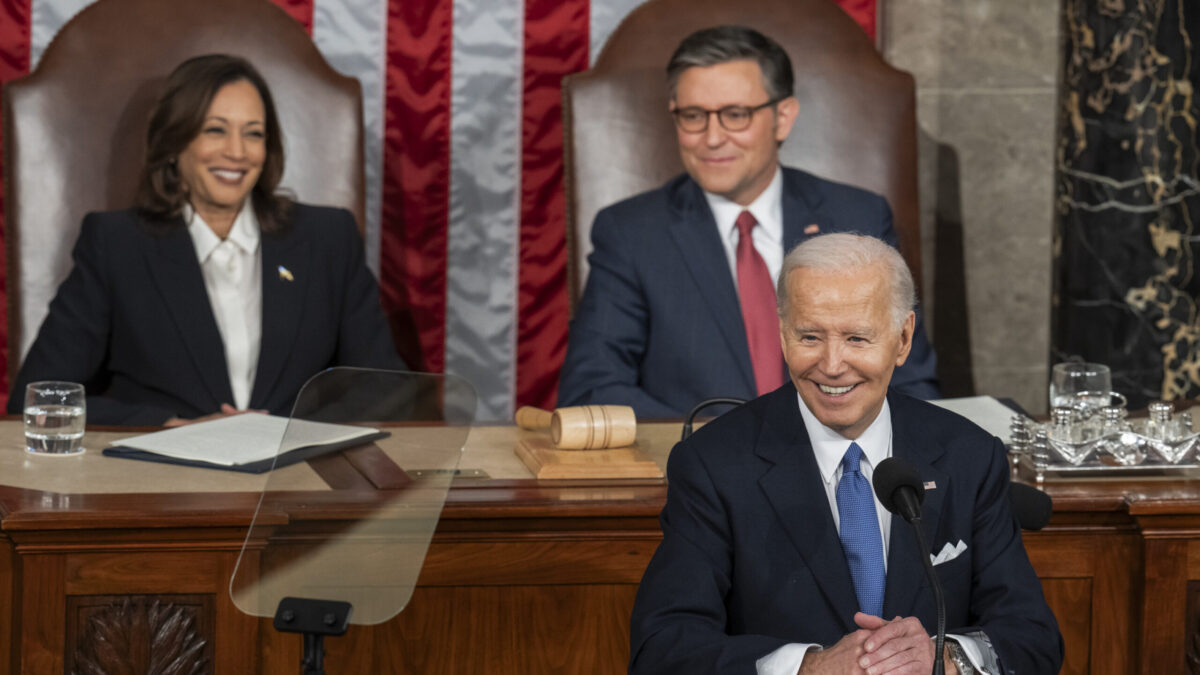
Give credit where it’s due: this week, Nancy Pelosi read a part of the Constitution. That is something of an improvement over the time in 2009 when, asked by a reporter from CNS how the Constitution authorized Obamacare’s individual mandate, Pelosi could only sputter, “Are you serious? Are you serious?”
Here in 2020, Pelosi got serious about politicizing a factual question when she and Rep. Jamie Raskin, D-Md., introduced a bill to create a body of 17 members to determine the president’s capacity to carry out his duties if the 25th Amendment is invoked against him. The bill, H.R. 8548, extends the two-party struggle into yet another realm of governance and making the decision over the president’s health a battleground ripe for partisans fighting for power.
Planning For the Unthinkable
The bill deals with parts of the 25th Amendment that have never been invoked since its passage in 1967. Section 3, which allows a president to surrender power to the vice president, has been used three times, in 1985, 2002, and 2007, when presidents underwent minor medical procedures that required them to be under anesthesia. All three incidents were unremarkable, with the president reclaiming the powers of his office after he regained consciousness.
Pelosi’s proposal involves Section 4, which deals with a scenario in which the president loses his powers due to the vice president and a majority of the Cabinet declaring his incapacity, then tries to get them back. It is a complicated situation, one that would probably include a president being incapacitated by mental disability and feuding with his Cabinet over whether he is up to the job.
Thankfully, this has never come up. If a president were believed to be incapacitated in that way, the amendment provides that the vice president and a majority of the Cabinet would transmit a written declaration to congressional leaders to that effect. The vice president then becomes acting president. If the president acquiesces in that decision, the vice president remains acting president for the rest of the term.
Where it gets complicated is if the president resists the Cabinet’s judgment and maintains he is not disabled and is ready to exercise the powers of his office. Professor Brian Kalt, who literally wrote the book on the 25th Amendment, included a flow chart from the book in his tweets on the subject last week, which you can see below:

Section 4 allows Congress to substitute some other group of people for the Cabinet in these calculations. They have never exercised that option, but Pelosi and Raskin’s bill would do so, creating a 17-member panel to judge the president’s capacity for office.
Eight of them are doctors nominated by congressional leaders, with the majority and minority party leaders of each house getting two picks apiece. Eight more seats are filled by four Republicans and four Democrats, who are required to have previously served as “President, Vice President, Secretary of State, Attorney General, Secretary of the Treasury, Secretary of Defense, or Surgeon General.” The final member would be a chairman elected by the other 16.
Constitutional, But Inadvisable
Congress would be fully within its rights to enact this legislation. But just because an idea may be constitutional does not mean it is good. Section 4 was meant to cover a specific kind of situation. The one mentioned most often involves President Woodrow Wilson, who remained in office and supposedly in charge after suffering a debilitating stroke in 1919. Wilson’s wife and doctor kept the president in seclusion and hid the seriousness of his condition, leading many to question who was truly running the executive branch.
Had Wilson’s vice president, Thomas Marshall, and cabinet wished to investigate that question, there was little they could have done. At the time, there was only one way to remove a president from office: impeachment. Yet Wilson had committed no high crime or misdemeanor; he merely suffered from ill health.
Nothing was done, but no one fixed the problem until the late 1960s when President John Kennedy’s assassination reminded the country that presidential health was a serious lacuna in the constitutional scheme. Sen. Birch Bayh of Indiana was the amendment’s principal author.
As Kalt notes in his book, a president who is unfit for office can already be removed through the impeachment process. The 25th Amendment was meant to deal with inability, not unfitness. He quotes Jay Berman, Bayh’s chief of staff, on this point:
The defining characteristic of Section 4 was always the idea that there is a distinction between unfit and unable. In the deepest recesses of my heart and my mind, I know that Donald Trump is unfit to be president — but he is not unable.
Keep Politics Out of It
That is why it makes sense that the body charged with evaluating the president’s capacity is his hand-picked Cabinet. Cabinet nominations are at least partly political, but having these members of the president’s administration judge his fitness helps to take much of the politics out of the calculus.
A majority of the Cabinet is not very likely to look to score political points by saying that the president who selected them is out of his mind. Their only incentive to do so would be when the president is clearly, manifestly unable to do his job and the fate of the nation requires that he be sidelined.
By contrast, nearly half of the committee in the Pelosi-Raskin bill would be partisans who already wish the president to be removed from office. The bill writes the two-party system into law and makes eight of the 17 members Democrats. Eight more would be Republicans, although not necessarily Republicans who are interested in keeping a lawfully elected president in office. The 17th might be non-partisan, someone acceptable to both sides, but that makes that one unelected person solely responsible for the fate of a presidency.
The reason for all of the 25th Amendment enthusiasm lately has been because some Democrats see it as a way to remove a president they loathe without using the impeachment provisions of the Constitution.
That is not its intended purpose. Supporters of the Pelosi bill will say that by nominating doctors, the congressional leaders will keep the commission non-political. That is hard to believe as dueling medical and public health experts have opposed each other throughout the COVID-19 outbrea. Democrats will find doctors who say what they want them to say, and so will Republicans.
Pelosi’s bill appears to be nothing more than another outbreak of Trump Derangement Syndrome, but one observer sees it differently: Trump. In a tweet last week, President Trump said “Crazy Nancy Pelosi is looking at the 25th Amendment in order to replace Joe Biden with Kamala Harris. The Dems want that to happen fast because Sleepy Joe is out of it!!!” Either way, it looks a lot like political motives are replacing impartial judgment.
Instead of shifting the 25th Amendment’s constitutional duty to unelected, unconfirmed, and likely unknown political appointees, Congress should keep it with the Cabinet, where it belongs. The Cabinet may be unelected, but they at least have been approved by the Senate and do their work in public, under public scrutiny. They work closely with the president, enabling them to notice changes in his demeanor that might indicate a disability. The Cabinet was the right choice for the job in 1967, and it remains the best option for this unlikely scenario today.








